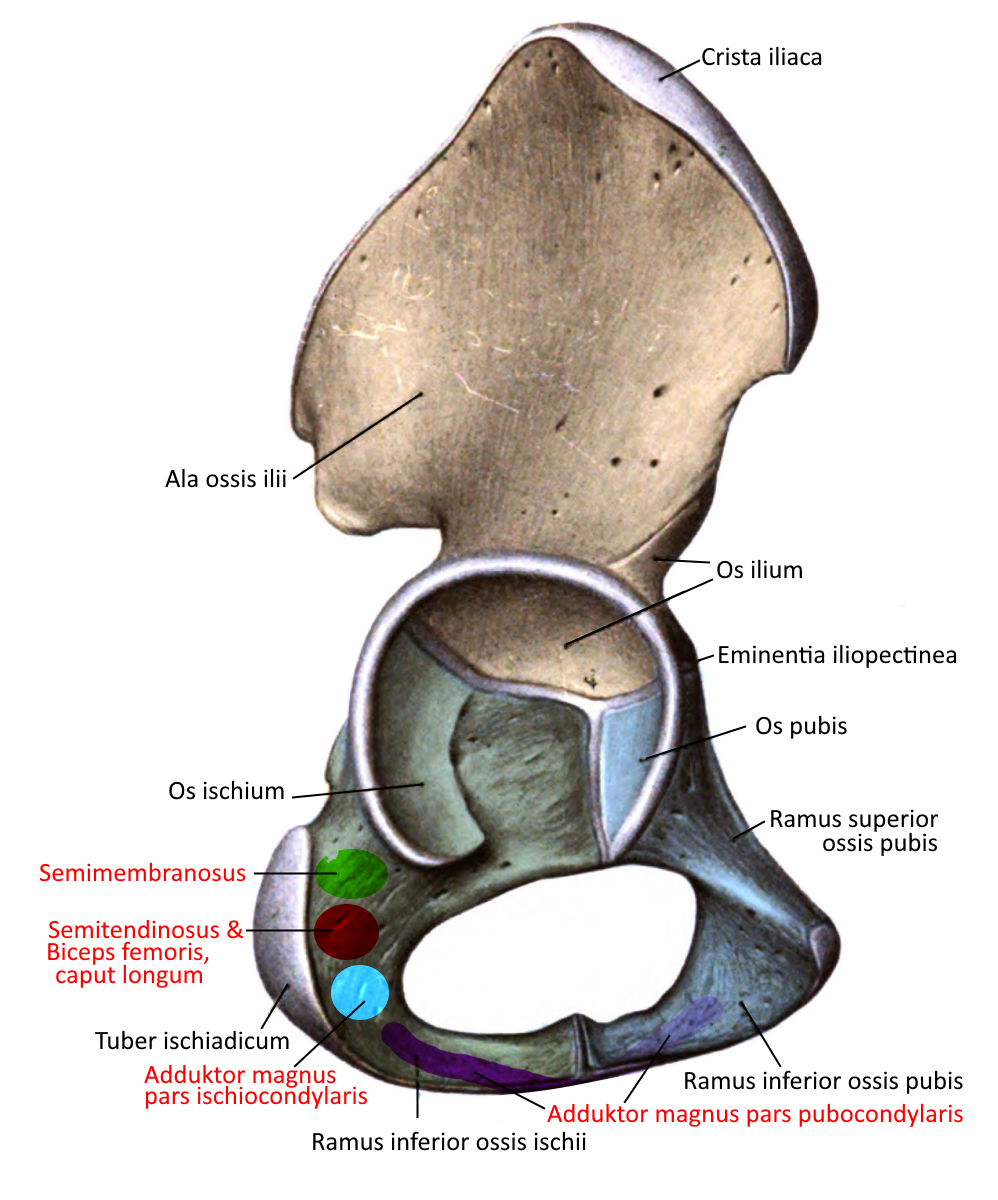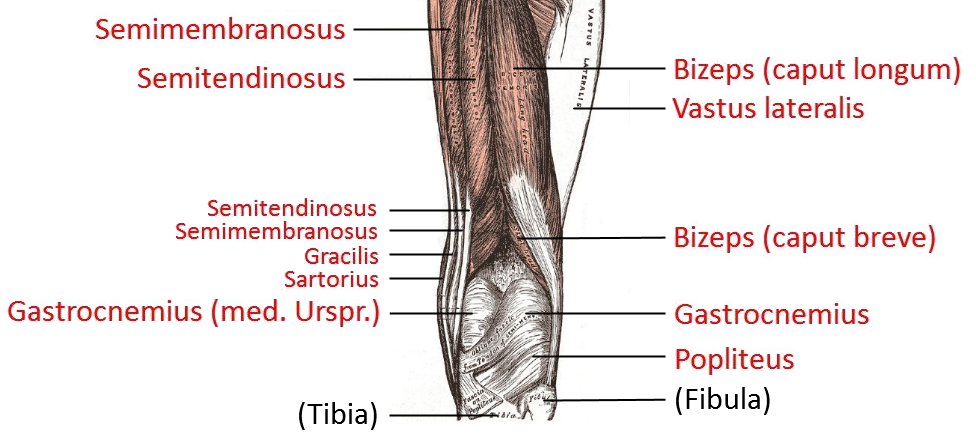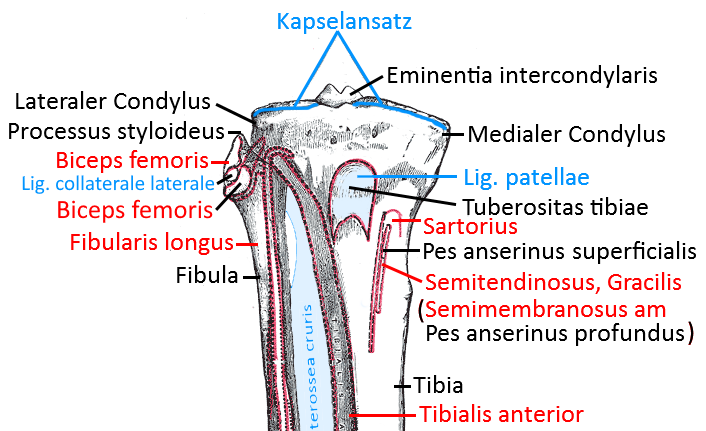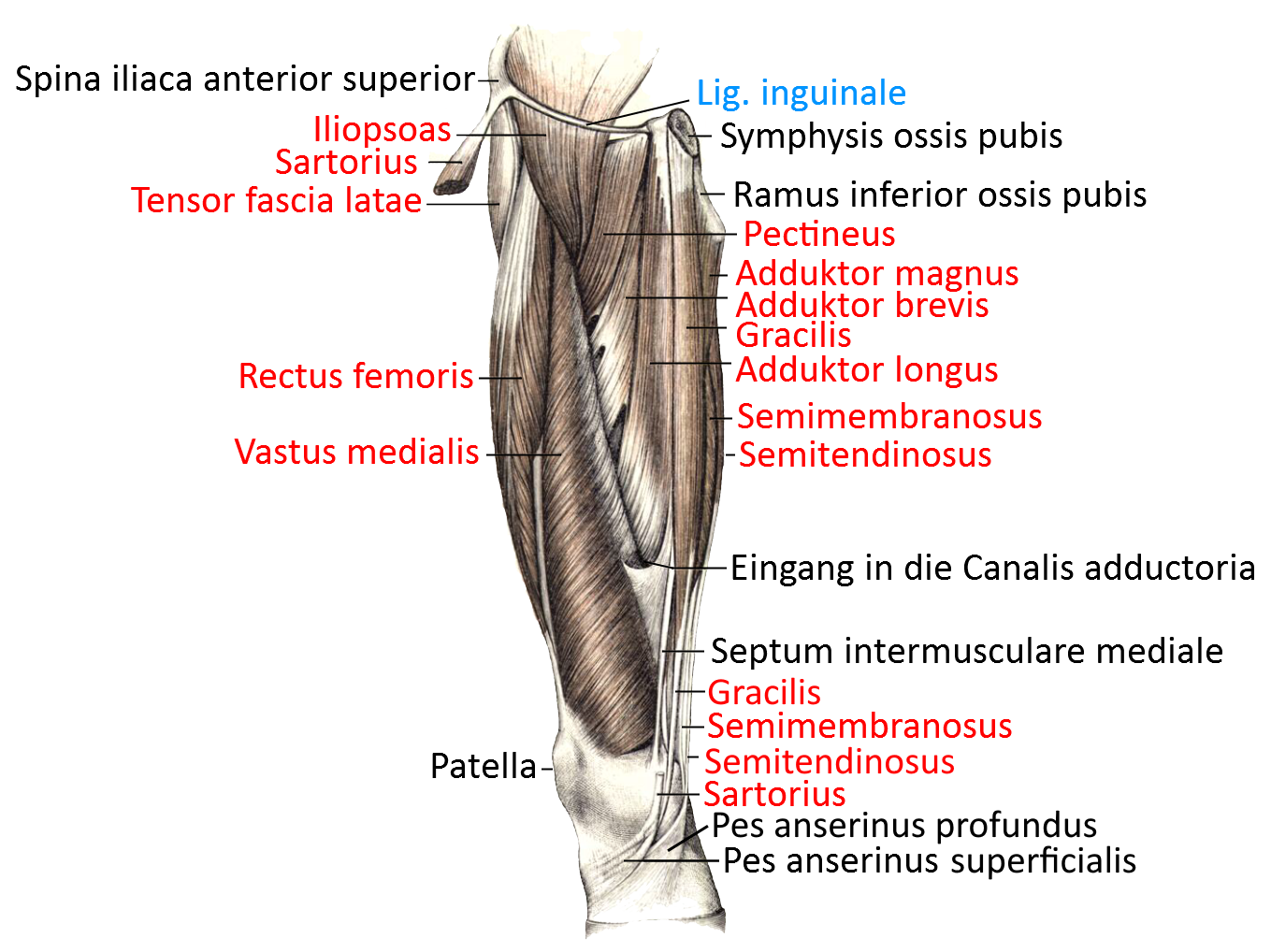yogabook / movement physiology / hamstrings
the muscles at the back of the thigh that flex in the knee joint and, if they span the hip joint being biarticularly, cause extension in the hip joint. These are the biceps femoris on the outside of the posterior thigh and the semimembranosus and semitendinosus on the inside. When the knee joint is flexed, the inner hamstrings turn the lower leg in in the knee joint, while the outer group (the biceps femoris) turns it out. When the hip joint is approximately extended, the inner hamstrings supports internal rotation in the hip joint, while the outer group supports external rotation. The semitendinosus generates a certain varus moment, the
biceps femoris a certain valgus moment. The semimembranosus also has a slightly adducting effect but is not counted as adductor. The muscles of the hamstrings pull the tibial plateau dorsally, thereby tensioning the posterior cruciate ligament (PCL) and relieving the anterior cruciate ligament (ACL).
The term ischiocrural comes from its course from the ischium to the crus (lower leg). This means that neither the sartorius, which covers the back of the knee, is part of the hamstrings, as it is the only knee flexor that is iliocrural, nor the gracilis, as it is the only knee flexor that is pubocrural.
The following image shows the origins of the hamstring muscles:

The following images show the insertions:



Antagonists:
– with regard to extension in the hip joint: the hip flexors iliopsoas and rectus femoris, secondarily sartorius and tensor fasciae latae.
– with regard to flexion in the knee joint: quadriceps.
Tests
Hamstring-flexibility test, definite yoga Flexibilitätstest Ischiocrurale Gruppe in uttanasana, definite yoga Flexibilitätstest Ischiocrurale Gruppe in trikonasana, definite yoga Flexibilitätstest Ischiocrurale Gruppe in parivrtta trikonasana
definite yoga Krafttest Ischiocrurale Gruppe im Kreuzheben, definite yoga Krafttest Ischiocrurale Gruppe in purvottanasana
